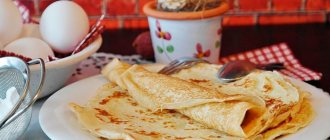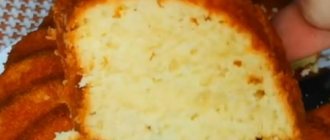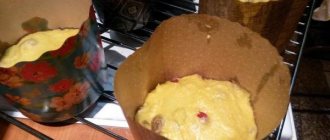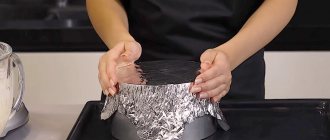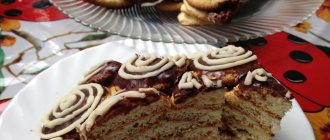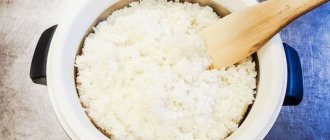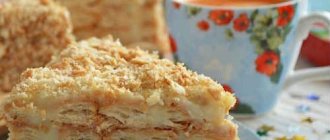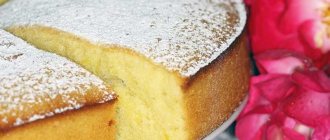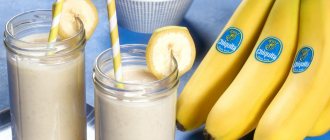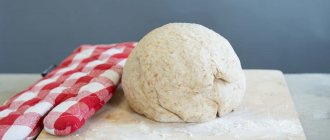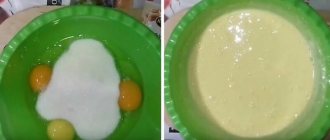Posting in the group: Useful tips
Properly prepared, namely slaked, soda will be a good component for making appetizing, airy and fluffy baked goods. The bulk ingredient makes the flour base loose, light and porous. At the same time, the product allows the dough to expand and maintain its fluffy shape. For work, it is permissible to use vinegar with boiling water, citric acid, honey, as well as fermented milk products.
Why extinguish soda with vinegar?
It is possible to extinguish baking soda with vinegar using a minimum of ingredients. This powder stabilizes the suspension well and can act as a leavening agent. At the same time, the bulk component must be sent into the dough directly with acetic acid, and not separately.
This is explained by the fact that a chemical reaction of the two components is required, which manifests itself in the form of the appearance of sodium acetate, which is widely used in the food industry as an acidity regulator or preservative. Moreover, this chemical ingredient is characterized by high temperature stability. Therefore, it will not affect the loosening of the dough during the baking process.
If the specified ingredient is not used in their production, pancakes will turn out not very airy and flat. When making culinary products, it is necessary to extinguish soda with acetic acid, since the raw material itself will not bring the desired effect, and the dish will have a soapy aftertaste. During the reaction between the compounds, carbon dioxide is formed, the bubbles of which will instantly make the dough tender and light. Thanks to this, the dessert acquires lightness and splendor.
In some recipes, instead of vinegar, you can use sour milk or kefir. This process is quite absurd in nature. Therefore, most housewives simply pour vinegar into a spoon with soda and watch the formation of bubbles, thanks to which the dough becomes fluffy. You can then use this mixture for its intended purpose.
However, many confectioners do not recommend quenching the bulk ingredient with a spoon, since carbon dioxide evaporates almost immediately. However, it does not reach the other components. It is best to combine flour and soda with a liquid that contains an acidic environment (for example, sour cream or kefir). Due to this, the dough will become looser and lighter.
When slaking soda using the traditional method, the flour base will need to be kneaded fairly quickly. Thanks to this, carbon dioxide will remain until the baking process.
The correct way to extinguish soda
It is necessary to immediately explain that the reaction must occur in the dough, only then will it come out loose, crumbly, and tasty.
To do everything correctly, mix flour and soda in the proportion indicated in the recipe. In another container, combine the acidic liquid product and water. And only then pour this mixture into the soda and flour. Thanks to these simple steps, the reaction occurs in the dough itself, and baking is a success.
The correct recipe for extinguishing soda at the first stage involves separately mixing all the dry and liquid ingredients, and at the second - combining them into a total mass.
Vinegar
The amount of ingredients usually depends on how much dough you need to make. But usually all proportions are given in the recipe. We'll talk about technology.
Ingredients:
- wheat flour;
- filtered water;
- soda;
- vinegar.
Preparation:
At the first stage, flour + soda and vinegar + water are mixed in two different bowls. At the second stage, the mixtures are combined together. The dough is thoroughly stirred and covered with a towel or cling film. Leave to sit for at least 15 minutes.
Citric acid
This reaction will require the following ingredients:
- soda;
- citric acid;
- purified water.
Preparation:
In two separate bowls, mix water + baking soda and water + citric acid. After which the two liquid compositions are mixed and poured into flour.
Fermented milk products
Typically, in this type of recipe, fermented milk products replace both water and vinegar or citric acid. At first glance, it may seem that in this case the soda is not extinguished at all. However, a complex chemical process occurs when soda is combined with lactic acid. The result is the same effect that, for example, vinegar gives.
To prepare the dough you will need:
- soda;
- flour;
- sour milk (stagnant), kefir, whey, ayran, tan and similar products.
Preparation:
Combine baking soda with flour and mix. Add the fermented milk product and stir the mixture thoroughly.
Juice
Vinegar and citric acid have a bad effect on sore intestines. And not all people can tolerate fermented milk products. And what to do in this case?
Natural products are healthy. Therefore, to prepare a tasty, crumbly dough, it is better to use soda slaked with citrus juice. Lemon is most often used.
Ingredients:
- soda;
- flour;
- lemon juice;
- water.
Preparation:
This dough is prepared using the same technology as in the recipe, in which soda is quenched with vinegar.
Boiling water
If someone in the family suffers from ulcers or gastritis, he or they are strictly prohibited from consuming acidic foods, including in baking.
You can also extinguish soda with boiling water.
Ingredients:
- wheat flour;
- purified water;
- soda.
Preparation:
First of all, put the water on the fire and wait for it to boil. Meanwhile, pour flour and baking soda into a bowl and stir. Once the water is boiling, add the amount called for in the recipe to the flour in the proportion called for in the recipe and stir quickly.
For stomach problems, extinguish soda with boiling water.
How to extinguish correctly
When baking soda reacts with any oxidizing agent, a decomposition reaction occurs. Ultimately, water with salt and carbon dioxide appears. In order not to lose the necessary ingredients, it is advisable to carry out the slaking process over the container in which the dough is located. For these purposes, it is recommended to use a tablespoon into which you can place the required amount of baking soda and a few drops of acetic acid.
In order not to confuse the proportions or not to add more, it is permissible to pour the liquid into a cutlery (for example, a spoon). When mixing the bulk and liquid components, a white foam begins to appear. As a result, carbon dioxide is released. When the dry ingredient is completely dissolved, the composition will need to be immediately added to the flour base and stirred well.
How to extinguish baking soda with vinegar - do it easily by following the instructions.
After quenching the raw material with acid, the treat will not have the taste of soda, since the chemical reaction will reduce its volume. A soda flavor may be present if the flour base does not contain ingredients that can destroy the sodium carbonate. These are mainly acids found in food.
Products made from shortcrust pastry, pancakes or muffins can be given a loose texture by carbon dioxide released as a result of mixing vinegar with soda or under the influence of high temperatures during the baking period. The main task of slaking a dry ingredient is to form and evenly distribute small gas bubbles over the flour base in a relatively short period of time. As a result, the dessert becomes light and airy.
To properly extinguish a bulk ingredient, it is recommended to follow simple tips:
- If sour cream, kefir or other fermented milk components were used to make the flour base, and the recipe did not indicate quenching soda, then you should not use vinegar liquid. To break down the dry ingredient, the acid contained in the ingredients, as well as the high temperature during baking, will be enough.
- If you use a lot of dry product, the product will not be too fluffy because there will not be enough acid. In this case, the baked goods will have a sugary taste.
Baking soda is characterized by a loosening effect. When the temperature increases to 70 ℃, carbon dioxide is released. This is explained by the fact that sodium bicarbonate begins to break down into its constituent components. However, complete decomposition requires a long time interval. As a result, the baked treat will have an unpleasant aftertaste.
There are several methods for extinguishing soda with vinegar for baking, which are listed in the points below:
- Traditional. While kneading the base, when adding sifted flour, you will need to include 11 g of soda. If you overdo it with this ingredient, the dessert will have a specific unpleasant aftertaste at the end of production. Before adding, soda should be quenched in vinegar, using 5 ml of vinegar per 11 g of white powder. When the components react, the mass will begin to sizzle, and when finished, you should continue with the traditional production of the flour base.
- Old. To do this, you need to take the components in the specified volume and mix them separately in a spoon. When the product is taken from the jar, you will need to pour vinegar into it and wait for the reaction. Then you need to put it into dough and use it for its intended purpose.
- Improved. To do this, the dry raw materials will need to be carefully poured in before the flour is added. Then you will need to turn on the vinegar and send 72 g of flour. Then you can mix the composition and wait for the mass to react.
It is believed that it is wrong to extinguish dry raw materials with vinegar liquid in a cutlery, since a huge part of the bubbles will simply evaporate, and because of this the base will not rise properly.
Correct instructions for how to extinguish raw materials with vinegar:
- First you need to include the required amount of soda in the flour.
- Then you should add the vinegar to milk or water, mixing the ingredients.
- At the end, bubbles should appear, thanks to which the base will rise.
Combine kefir with eggs and other liquid ingredients in a separate container and stir well. Afterwards, all the ingredients will need to be combined in one container. Traditionally, baking soda is required to be added to pancakes, muffins and shortbread products. It perfectly raises baked goods when there is no yeast. It must be remembered that when making a biscuit base, dry raw materials are often not used.
For baking step by step
Many people use their grandmother’s methods and simply dissolve soda in a spoon and then add it to the dough. There are actually several warrants for quenching baking soda with vinegar:
- In a spoon. This method is the most common, but in fact it is less effective than other known methods. We collect the required amount of soda in a large spoon or other small container, pour vinegar on top. The reaction does not take long to arrive; a hiss occurs instantly. When it is complete, add the mixture to the dough. The disadvantage of this method is that all the carbon dioxide evaporates into the air, and only a small part of it gets into the dough. The dough turns out fluffy, but only due to the powder that got into it without reacting with vinegar.
- In liquid. This method is more effective than the previous one. Mix all the liquid ingredients specified in the recipe. Add the specified amount of soda. Then add a little vinegar and stir quickly so that all the added powder is captured. This way, the slaked soda is distributed evenly throughout the dough. Then add flour and all other ingredients required for the recipe.
- Apart. Not everyone knows about this option of extinguishing soda with vinegar, and some are simply too lazy to use it. However, it is this that is the most effective, since the released carbon dioxide remains in full in the dough and does not evaporate. So, we divide all the ingredients into liquids and bulk. Add soda to the bowl with the bulk ingredients and mix well so that it is evenly distributed. Add the required amount of vinegar to the bowl with the liquid ingredients. Usually the recipe indicates the required amount of soda, and as for vinegar, it is recommended to take half as much as the powder.
For pancakes
Cooking everyone's favorite pancakes is impossible without baking soda. Usually it is added in very small quantities, as they turn out tender and thin. Let's consider one of the classic recipes, for which you need to use the method of slaking soda with vinegar.
We prepare:
- a glass of flour;
- several eggs;
- 0.5 liters of fermented milk products, ideally milk;
- salt and sugar to taste (depending on the filling);
- 1 tsp soda slaked with vinegar;
- 50 ml sunflower oil.
Stages:
- Pour milk or other fermented milk product into a saucepan and place on low heat, leaving until the temperature rises to 40 degrees. Pour it into the container for preparing the dough.
- Add spices. If the filling is sweet, for example, with cottage cheese and raisins, then you need to take a pinch of salt and a few tablespoons of sugar. If on the contrary, then there should be less sugar. Beat the mixture with a whisk or mixer. Break the eggs and beat again.
- Add soda to the whipped dough and quickly top it with vinegar. Mix thoroughly to evenly distribute the baking powder in the dough.
- Add flour and beat again. The result should be a homogeneous dough, without lumps. At the end, pour out the oil.
- Leave the finished dough for half an hour. This time is necessary for it to become saturated with carbon dioxide, which is released as a result of the interaction of soda with vinegar.
- Fry the pancakes in a heated frying pan on both sides.
For pancakes
Pancakes are a favorite childhood treat. They say that every housewife achieves them in her own way; in any case, there are few who are indifferent to them. Consider a recipe for pancakes, which turn out unusually fluffy due to the addition of slaked soda.
We prepare:
- a glass of flour and kefir;
- egg;
- sugar and salt to taste;
- 0.5 tsp soda;
- oil for frying.
Stages:
- The set of ingredients allows you to use the most effective method of extinguishing soda with vinegar - separate. To do this, break the egg, beat it with a whisk and gradually add kefir.
- Mix flour with sugar and soda. Mix well. Add a pinch of salt.
- Combine both mixtures, mix thoroughly and leave for half an hour.
- Pour oil into a heated frying pan, heat it up and lay out the pancakes, fry on both sides. It is important not to press the dough in the pan so that it is as fluffy as possible.
For Charlotte
Charlotte is the favorite pastry of many housewives. It is very simple to prepare, does not require much time, and affordable products are also used. You can find many variations of the dish; consider the classic version, which involves achieving a fluffy dough by adding slaked soda.
We prepare:
- 150 g flour;
- 4 eggs;
- a glass of sugar;
- several apples;
- soda.
Stages:
- Separate the whites and beat, adding sugar in parts. It is important to take your time and continue until foam begins to form.
- Add the yolks and beat for a few more minutes.
- Add vinegar.
- In a separate bowl, mix flour and soda.
- Add the resulting dry mixture and beat for a few more minutes. The dough should look like thick sour cream and have a uniform consistency.
- Wash the apples and cut them into slices. You can peel them if you want a soft, puree-like filling as a result.
- Grease a frying pan or small baking sheet with oil or put parchment paper, then lay out the apples and fill them with dough on top.
- Cook for 40 minutes at 200 degrees.
Which vinegar is best to use?
It will be easier to extinguish baking soda with vinegar if you know the proportions of liquid and bulk raw materials. Often, a 9% composition is used to carry out the process, which will help achieve pomp and a beautiful result. However, if table vinegar is not available, it can be replaced with apple or balsamic analogue, as well as vinegar essence. It is not advisable to use rice, synthetic or alcohol vinegar to extinguish dry raw materials.
This is explained by the fact that the above compositions contain completely different acid concentrates, which will be felt in ready-made flour desserts. Apple cider vinegar is characterized by 3% or 6% strength. Therefore, it is mainly used in the process of pickling vegetables, as it imparts a sour taste.
However, it does not have the same effect as the 9% composition. Vinegar essence is characterized by 70% strength. It is not advisable to use undiluted liquid for quenching, as it can spoil the taste of the product.
When slaking dry raw materials with the above components, the following proportions must be observed:
| Table vinegar 9% | Apple cider vinegar 6% | Vinegar essence 70% |
| It is acceptable to use undiluted. | Mainly used without water. | The composition must be diluted with water. |
| Bulk raw materials will need to be extinguished in a volume of 1:1, respectively. | For extinguishing, the proportion should be 1:1. | To extinguish, you will need to add 1 part of soda to 0.5 parts of essence. |
Balsamic vinegar has a rich, sour-sweet flavor. In this regard, it is used for dressing salads or vegetable products. It is also used in making sauces for deli meats. However, this composition must be sent to almost or completely finished products or the interval of its heat treatment must be reduced. When making a baking base, dry raw materials are often not quenched with balsamic vinegar.
However, it is permissible to dilute a teaspoon of bulk ingredient with 4 tsp. liquid composition. Despite the fact that the liquid raw material has a dark and thick consistency, the slaking process will be normal. If the correct proportions are observed, it is possible to achieve the desired effect. If the base contains kefir, sour milk, apples or grated tangerines, there is no need to quench the dry raw materials.
If you add vinegar to the flour base, the baked goods will turn out too sour. If you are prone to allergic reactions or have an individual intolerance to strong raw materials, it is recommended to use apple cider vinegar to extinguish.
Can baking soda be quenched with balsamic vinegar?
Balsamic vinegar is a product made from white grape varieties. It goes great with meat, fish, salads, marinades and sauces.
Balsamic vinegar is popularly called royal vinegar, for its beneficial properties and considerable price. It is usually not used for baking. After all, to make a good dough, you can also take table vinegar, which will be much cheaper than balsamic vinegar. In addition, when exposed to high temperatures, balsamic vinegar loses its taste and benefits.
Using boiling water
It is permissible to extinguish soda not only with vinegar, but also with boiling water. This option is suitable for those who have stomach diseases (for example, gastritis or ulcers). This is due to the fact that acidic components are contraindicated for patients. Therefore, to create baked goods, it is forbidden to extinguish soda with citrus juice or table vinegar.
To extinguish a bulk ingredient with boiling water, you will need to do the following:
- Initially, you need to boil the liquid. It must be either bottled or filtered.
- In a container you need to combine soda with flour and stir well.
- Then very hot liquid should be poured into the bulk composition.
- The prepared mixture must be quickly stirred until it has a uniform texture.
- Afterwards, you can start making the delicacy according to the instructions given in the recipe.
For the reaction you will need 11 g of soda and 250 ml of water. Eggs must be included in the composition when the workpiece has completely cooled. This is due to the fact that eggs, under the influence of elevated temperatures, begin to curl and harden.
For cake, cupcake and roll
Many cake recipes contain soda in their description, which should be quenched with vinegar. Most often these are numerous versions of biscuits, which should be fluffy and light. But there are other recipes.
So, for example, for cakes that require preparing the dough in a hot water bath (honey cake), soda can be added in dry form. It is extinguished during the heating process among the liquid ingredients (honey, melted butter, sour cream, chocolate, etc.). The completed reaction will immediately make itself known by hissing and the appearance of foam.
To extinguish soda with vinegar, it is best to use apple essence: it does not have a strong odor and has a mild taste. It is recommended to be used by many professional chefs and confectioners. To obtain fluffy baked goods, you need to mix baking soda with flour and sugar, and acetic acid with the liquid ingredients for the dough.
You can extinguish soda with fresh lemon juice if you don’t want to add vinegar. In this case, the cakes will definitely not have an unpleasant aftertaste.
Thus, to add fluffiness to baked goods, pancakes or pancakes, you do not always need to rely on the experience of your mother or grandmother and follow their instructions. It is better to try to cook something yourself once, using the correct method of extinguishing baking soda. And it is not at all necessary to use acetic acid; you can successfully replace it with dry citric acid or lemon juice. And for those who are just starting to create in cooking, it is best to use a baking powder, which is sold in any store - this way the dough and the finished product will definitely not be spoiled.
Citric acid powder
When mixing the base, which does not contain an acidic component, it is necessary to adhere to the proportions of dry raw materials with acetic acid, since if they are not met, the culinary treats will have a soapy taste. If there is more baking soda or vinegar liquid than required, the baked goods will have a bitter taste.
In this case, it is recommended to use citric acid powder or lemon juice:
- Citrus acid in a volume of 12 g must be dissolved in 83 ml of water.
- Then, in another container, you will need to combine soda with water in the same volume, since the ratio of dry raw materials to acid should be in a ratio of 1: 1, respectively.
- Next, you should send 2 compositions to the base, stir and bake immediately.
When making homemade delicacies, it is advisable to use such a volume of acid and dry raw materials that will ensure the decomposition reaction of sodium carbonate, when part of the substance is deliberately not dissolved.
Is it possible and how to extinguish soda with apple, 70 percent, balsamic vinegar: proportions
You can extinguish sodium bicarbonate and balsamic vinegar. You won't ruin anything. But the fact is that it is destroyed during heat treatment and its pleasant sweet and sour taste disappears. It is almost never used in baking.
Vinegar essence with a concentration of 70% can also extinguish soda. To extinguish 8 g of sodium bicarbonate (spoon), you need 8 g of essence.
Is it possible and how to extinguish soda with apple, 70 percent, balsamic vinegar: proportions
Sour juice
It is permissible to extinguish baking soda with sour juice, especially if a lemon or lime composition is used for these purposes.
In this case, to obtain the desired reaction, you can use the following juices:
- based on apples;
- grape based;
- berry.
The volume of the above compositions will be identical as when using lemon juice. It is also permissible to use freshly harvested currants or cranberries to extinguish soda. To carry out the reaction, you will need to squeeze the juice out of a glass of berries. Then you need to add a teaspoon of bulk ingredient to it.
To extinguish baking soda with acidic juice, the following steps are required:
- First you need to squeeze out the juice. The result should be 9 teaspoons of liquid.
- Then 11 g of soda should be combined with juice.
- Afterwards, the prepared composition must be sent to the flour base.
How can you extinguish soda?
You can neutralize soda with any food acid. All of them are harmless to humans and are used in the food industry. Food acids include the following:
- dairy,
- sorbic acid,
- lemon,
- apple,
- wine
Any of these acids can interact with baking soda. The reaction rates for neutralizing sodium bicarbonate with other food acids are slightly different. They are determined by the strength of the acid. When conducting home experiments with dough, you can select the quantity and practice the method of using any food acid to obtain good baked goods. It is most convenient to use vinegar, which is always available at home, is inexpensive, dissolves soda well, reacts quickly with it, and does not have a harmful effect on the body.
Dairy products
It is necessary to quench baking soda with vinegar in order to achieve a loose and fluffy culinary product. In this case, the procedure must be done every time before adding it to dessert. However, if table vinegar is not available, it can be replaced with any fermented milk product. If the composition contains any fermented milk raw materials, it will be enough to simply combine the dry food component with sifted flour.
If there is no dairy component in the recipe, you will need to do the following:
- The fermented milk product needs to be heated a little over the fire.
- Next, you should quickly place dry raw materials into it.
- The finished composition must be thoroughly mixed, observing how the reaction occurs in it to form foam.
For 1 glass of kefir or sour cream you need to add 11 g of soda. The use of quicklime raw materials is permissible extremely rarely when the dessert is prepared from jam or citrus fruits, since in this case the hard crust softens and the jam itself loses its bitter taste.
How to understand: soda slaked with vinegar?
This means that a chemical reaction has occurred between sodium bicarbonate and acetic acid, releasing carbon dioxide. This gas is what lifts the dough.
It is worth understanding that if the recipe specifies the use of sour milk or kefir, then there is no point in introducing vinegar.
How to understand: soda slaked with vinegar?
Honey
When creating a flour delicacy, there is no need to specifically include honey in the composition. However, when creating an apple cake or honey cake, where the use of honey is necessary, there is no need to use auxiliary components for slaking. To ensure a normal reaction, it is permissible to slightly warm the honey in a water bath. Its temperature should not exceed more than 80 ℃. To extinguish 11 g of dry food raw materials, you will need approximately 1 tbsp. l. honey
Slaked soda with vinegar will give the dough a loose and porous texture. At the same time, the baked goods turn out quite appetizing, light and fluffy. The main thing is to adhere to proportions when working with bulk ingredients. Otherwise, the flour product will not be very tasty.
Why do you need soda in pancakes and charlotte?
In chemistry, the powder is called “sodium bicarbonate.” As part of the school course, attentive students will learn that when heated, it decomposes into carbon dioxide and water. The small bubbles formed after the disintegration process give the dough an airy and lightly porous structure.
Experienced housewives know that if you forget about this ingredient, the baked goods will turn out hard and sticky. The appearance does not make you want to try it, and the taste is significantly different from what was planned.
In Russia, baking soda has become one of the important components of baking since the beginning of the 20th century.
The greatest effect is achieved when sour cream or kefir is present in the recipe. In this case, sodium bicarbonate is affected not only by temperature, but also by acid. Thanks to this, the dough rises more.
Nowadays, for loosening, you can buy baking powder in any store, which is added to flour at the initial stages of baking. This type of baking powder can be easily prepared at home.
Required:
- citric acid - 5 parts;
- soda - 3 parts;
- flour - 10 parts.
The ingredients in the composition are selected in such a way that no additional quenching with acidic liquids is required.
Baking powder and sodium bicarbonate are completely replaceable, but in the latter case, quenching is required for baking.
The only exception is recipes that contain honey. Baking soda is essential for these dishes.
Another ready-made baking powder is ammonium carbonate. The peculiarity of the powder is that under the influence of temperature it releases carbon dioxide, which is necessary for the dough to be fluffy, but this type of product is very unstable. In contact with air, it quickly decomposes, so the main area of application of ammonium is the industrial preparation of cakes and muffins.
Delicious recipes
Using slaked soda you can prepare pancakes, charlotte and pancakes.
Milk-based pancake recipe:
- Beat 2 eggs with 2 tablespoons of sugar and half a teaspoon of salt.
- Add 500 ml of milk at room temperature to the mixture.
- Separately, mix 1.5 cups of flour with sodium bicarbonate and citric acid in the amount of ½ teaspoon.
- Prepare the dough.
- Immediately fry the pancakes in a preheated frying pan with the addition of vegetable oil.
Apple charlotte is a favorite dessert, especially among summer residents during the season of sour varieties.
To make a delicious and easy pie, you need:
- Beat 3 eggs and ½ cup sugar in a blender.
- Add 5 g of soda, pour in 2 drops of vinegar.
- Stir again.
- Peel and cut the apples into cubes.
- Place the pieces in a baking dish.
- Pour in the dough and wait 3-5 minutes.
- Preheat the oven and cook the pie for half an hour.
Pancakes are a great Sunday breakfast, and you can’t do without them during Maslenitsa festivities.
Many consider the most delicious baked goods with kefir, which are prepared as follows:
- Mix 500 ml of kefir, 2 eggs, a pinch of salt.
- Heat a little over the fire, but do not bring to a boil.
- Add 150 g of flour to the mixture.
- Add 2 g of soda and a drop of vinegar.
- Pour in 2 tablespoons of sunflower oil in a stream.
- Stir and start baking in a heated pan.
Since the oil is already present, there is no need to grease the pan with it.
Store-bought cookies can be replaced with homemade ones, prepared yourself.
The simplest version of shortbread dessert for tea:
- Combine 200 g of granulated sugar with 3 chicken eggs.
- Add a two hundred gram stick of butter.
- Stir.
- Add a teaspoon of baking soda and quench with vinegar.
- Sift 450 g of flour and pour into the dough.
- Knead the dough and put it in a cool place for 20 minutes.
- Roll out the layer to 5 mm, cut the cookies using molds.
- Bake for 20 minutes.
How to properly dilute soda ash for processing eggs.
How to use citric acid or juice
Citric acid is a food additive. It is odorless and appears as a crystalline powder that resembles soda. To extinguish 8 g (1 tsp) of an alkaline substance, 6.7 g (1.5 tsp) of acid will be required.
The crystalline ingredient is diluted: take 1/3 cup of water for 12 g of acid. In another bowl ¼ tsp. alkaline powder and diluted in a small amount of liquid and combine the two compositions together. The proportion for the acid and soda test should be 1 to 1.
Do you use citric acid to extinguish soda?
Not really
The acid and powder are dissolved in a separate container. It looks like this: vinegar + water, sodium carbonate + water. An acidic solution is poured into the dough, then soda. With this mixing, carbon dioxide is evenly distributed.
Citric acid is included in baking powder, which is prepared at home.
Required:
- 12 tsp. wheat flour;
- 5 tsp. sodium carbonate;
- 3 tsp. citric acid;
- combine ingredients.
The composition does not require vinegar.
Watch the video on how to make baking powder for dough:
Use lemon juice. The ratio of liquid and soda is 1 to 9 (1 teaspoon of powder will require 9 teaspoons). Other juices are used: apple, grape, cranberry.
Device for obtaining lemon juice
FAQ
Sometimes many find it difficult to use soda and vinegar because they do not know the proportions. Of course, baking powder will make the task easier, but such a component is not always present in the house; soda and vinegar are regular products in the kitchen.
How to repay 1 tsp. soda with acetic acid
In a bowl, combine water, milk, and add acetic acid. In another container, mix dry ingredients. Then combine both compositions. Ideal rate for extinguishing: 1 tsp. and 0.5 tsp. vinegar 9%.
Is it possible to suppress baking soda with apple preservative?
Baking with apple cider vinegar turns out loose and airy. There are two types of product: synthetic and natural. The use of the latter ennobles the dough with a pleasant taste and aroma.
Do you like baked goods with apple cider vinegar?
Not really
The natural ingredient is added to sauces, mayonnaise, marinades, dressings, and salads. The preservative has a pleasant apple aroma. Fresh cabbage salad with vinegar tastes sweet and sour.
What should be the ratio of vinegar to soda?
If the recipe specifies an alkaline product in grams, housewives use cutlery:
- 5 g – ⅔ tsp. without slide;
- 10 g – 1 tsp. with a slide;
- 20 g – 1 tbsp. l.;
- 30 g – 1 tbsp. l. with a slide.
The recipe indicates the amount of soda; add a part of acid to 2 parts of powder. For 2 tsp. powder pour in 1 tsp. preservative.
Features of baking baked goods
You can achieve fluffiness and porosity of the dough in different ways:
- adding “live” yeast;
- introducing granulated yeast dissolved in warm water or heated milk into the dough;
- mixing the dry product with flour before baking the baked goods;
- adding baking powder;
- introduction of slaked soda product.
In any case, the resulting mass should be porous, saturated with carbon dioxide. Slaked soda increases its content several times, without requiring a long wait, and therefore is so popular.
The action of the loosening component is based on a chemical reaction consisting in the release of carbon dioxide, water and acetate when sodium bicarbonate reacts with any acidic medium. The oxidizing agent can be:
- citric acid solution;
- fermented milk product;
- natural citrus juice;
- vinegar solution.
The last of these products can be natural (apple, cherry, grape) or synthetic, produced in the form of a 6 or 9% solution, as well as in the form of vinegar essence, requiring additional dilution with water.
Slaked soda works as a leavening agent not only when combined with an acidic environment, but also when exposed to high temperature. As a result, the dough is saturated with gas and pores are formed in it, making the composition light, tender and airy.
How to effectively extinguish baking soda with vinegar for a certain type of baking?
Each housewife has her own secrets for preparing baked goods so that they turn out fluffy, airy, golden brown, with a delicate crust. But is the process of quenching the alkaline component different for different types of confectionery delights? Let's look at this issue with a few examples.
For making pancakes
Add 2 tbsp to small glasses. l. water. Soda powder is diluted in one glass, and vinegar in the other. The contents of both glasses are drained, and the sizzling mass is quickly added to the dough and mixed. The key word is “quickly,” so that most of the CO2 formation reaction takes place inside the dough, making it light and lacy.
For making pancakes
When using kefir in the dough, there is no need to quench the soda, since this product contains lactic acid. Due to it, the necessary chemical reaction will take place, which will give the pancakes fluffiness and porosity. According to the recipe, salt and sugar are added to kefir, and then sodium bicarbonate. Then pour in the flour and prepare the dough. No sodium bicarbonate is added to yeast pancakes at all.
For Charlotte
In a biscuit pie with apples, you can add separately baking soda to the flour and vinegar to the eggs. Mix the ingredients thoroughly and place the apple pie in the oven.
FYI: Adding too much baking soda will not make the dough fluffier. The baked goods will turn out bitter with a soapy (soda) aftertaste. With an abundance of soda, large bubbles are formed that burst in the dough. Therefore, the baked goods first rise well and then settle.
